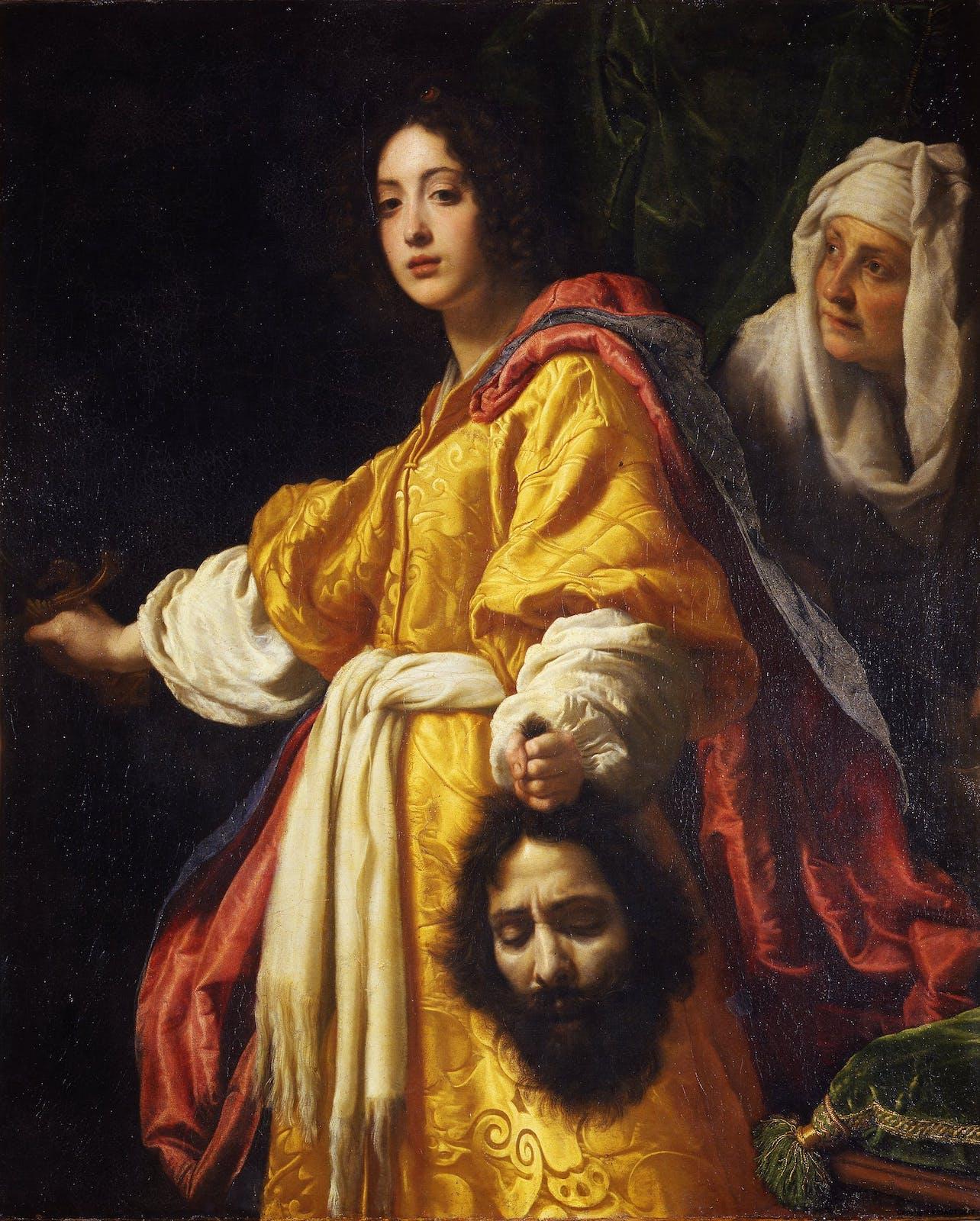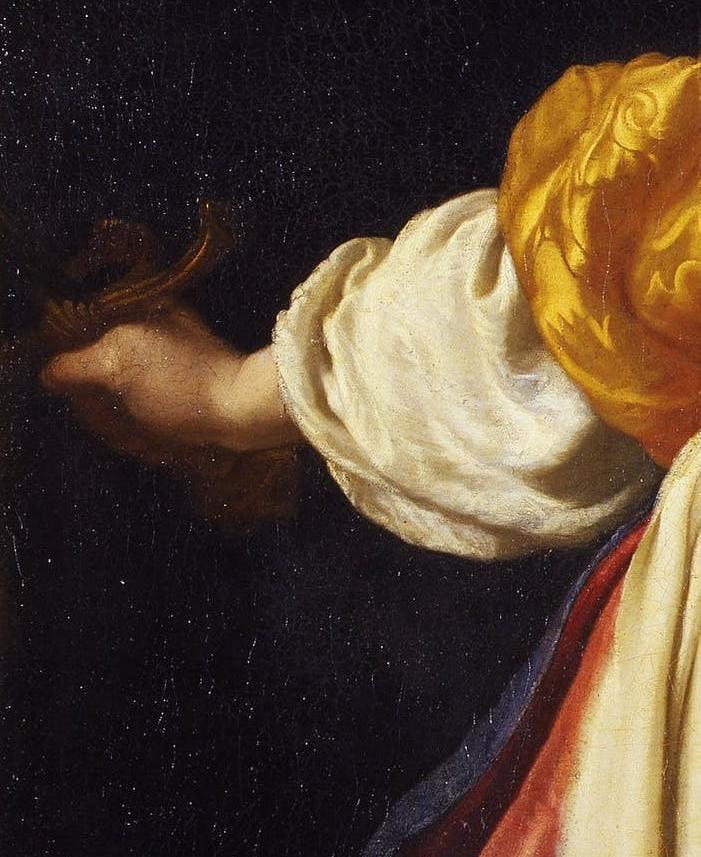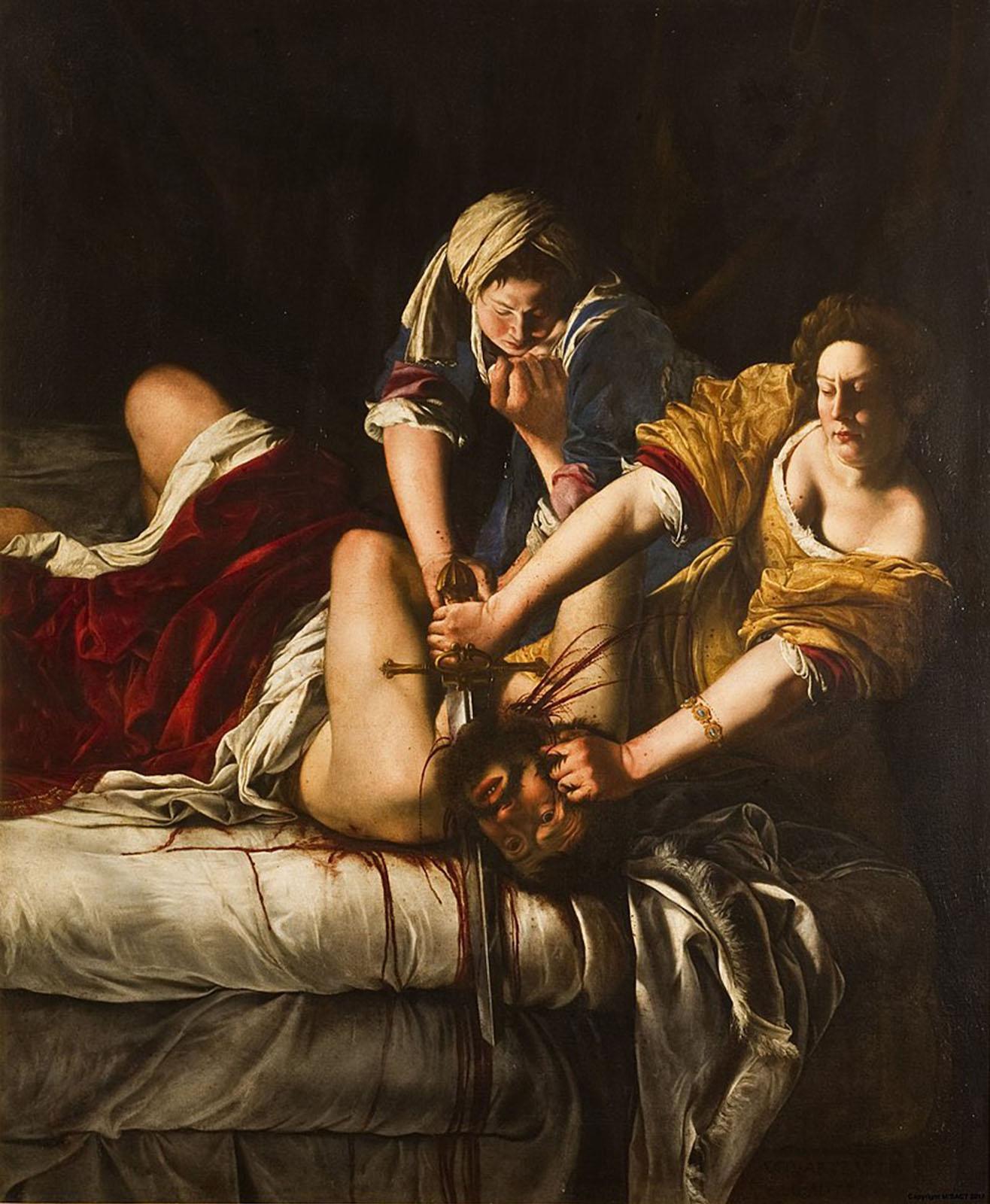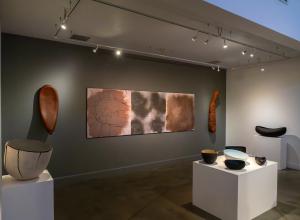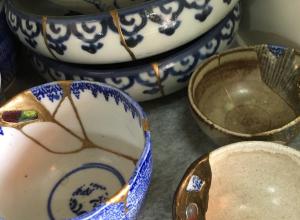For example, Christofano Allori’s Judith with the Head of Holofernes features Judith standing with a sword in her right hand and Holofernes’s head in her left. Given the context of the story, we know what she has done, but the way she is presented barely indicates this. Her clothes are vibrant and flawless, not a speck of blood to be seen. She is poised and calm with little emotion on her face. The sword she holds is almost completely out of frame, leaving only the hint of a delicate hilt in her hand. This Judith is bright against a bleak background, a symbol of grace and purity, a portrait of what society thought strong women should be: Flawless; strong, but only in theory; and forever passive.
This is in direct contrast to Gentileschi’s decision to depict Judith as an active agent, in the midst of a physical struggle.
With her left hand, Judith firmly grips Holofernes’s hair as she slashes the sword across his throat, imposing her own physicality. Her maid holds Holofernes down, limiting his ability to fight back. Both Judith and her maid’s sleeves are rolled up; they’re here to get the job done.





